By Eric Niderost
Commandant Robert Lonsdale of the Natal Native Contingent was feeling very unwell, nursing a bad case of sunstroke that left his head pounding and his senses reeling. Lonsdale was also exhausted and hungry, but he took his command responsibilities seriously. His men hadn’t eaten in two days, and he was riding back alone to the main camp at Isandlwana in the hope of procuring some supplies for his famished troops.
The British were in the opening stages of a campaign against the Zulu, the most powerful tribe in South Africa, and so far the search for its main impi (army) had been largely in vain. It was about 2 pm on the afternoon of January 22, 1879 when Lonsdale finally rode into camp. The heat was so intense it was like a furnace and the commandant’s head was swimming. His befuddled senses could barely make out their surroundings, but he was reassured by the sight of British soldiers in their distinctive red tunics going about their business. A bullet suddenly zipped past Londale’s ear, but he took it in stride. The African tribal troops of his own NNC were notoriously inept at handling rifles, and someone’s gun had gone off by mistake.
Suddenly a Zulu warrior emerged from a nearby tent, his hand gripping a bloodied spear. The shocking sight brought Lonsdale to his senses, and a single sweeping glance told him the camp had been taken by the Zulu. Thousands of warriors were now milling through the camp, searching dead bodies and rifling through tents and commissary stores. The red-coated soldiers he had seen earlier were Zulu wearing bits of British uniforms.
“But I left a thousand men to guard the camp…”
Lonsdale pulled the reins of his horse, dug in his spurs and rode off as fast as he could, the Zulu in hot pursuit. A few spears were flung, and a few scattered shots were sent in his direction, but the Zulu were too busy plundering to give much attention to a solitary rider. When his horse could stand no more Lonsdale was forced to dismount and stagger along on foot.
Finally, about five miles from Isandlwana, Lonsdale stumbled upon his own 1st Battalion, 3rd Regiment, NNC. Lord Chelmsford, the British commander in chief, was with the NNC and could scarcely believe the horrible news. Stunned beyond words, all he could mutter was: “But I left a thousand men to guard the camp.”
Gathering what remained of his army, Chelmsford led it back to Isandlwana. It was around 8 o’clock when the British approached their stricken camp, and night had fallen. It was so pitch black soldiers were literally stumbling on the bodies of their dead comrades. The camp proved free of Zulu, so Chelmsford ordered his troops to snatch a few hours’ rest. There was no choice but to bed down on the battlefield, and soldiers later were haunted by the chilling experience of sleeping among the dead. Faced with a demoralized command, Chelmsford ordered that the camp proper was to be off-limits. A number of officers and a journalist, Norris Newman, ventured into the camp anyway.
Incomprehensible Savagery Stuns the British
Isandlwana was a charnel house, a place of slaughter where every living thing had been killed without mercy. The dead were piled in heaps where they fell, sightless eyes staring blankly. The bloodied corpses had been stripped naked, their stomachs slashed to expose entrails. The mutilation was the Zulu way of releasing an enemy’s spirit. Horses, mules and oxen had been dispatched, and even pet dogs were not spared. Commandant George Hamilton-Browne of the 1/3rd NNC went to his tent, only to find his servant dead, his two spare horses slaughtered—they were still tethered to a picket line—and his dog pinned to the ground by a Zulu spear. It was said that the green grass was red with blood, and littered with the brains and entrails of the fallen.
Horror piled upon horror in mind-numbing succession. Some decapitated British heads were found neatly arrayed in a circle, and a drummer boy was discovered lashed to a wagon wheel upside down with his throat cut. Debris was everywhere, including half-burned tents, bits of uniforms, smashed boxes and scattered personal effects. The camp had been thoroughly looted, the Zulu rifling through the commissariat boxes and littering the ground with flour, sugar, tea, oats and other supplies. Spent cartridge shells lay thick amid the debris, mute testimony to the heavy fighting that had occurred. When dawn broke the vultures would appear, ready to feast impartially on the dead of friend and foe alike.
For the British it was a tragedy almost beyond human comprehension, shaking smug Victorian complacency to its very core. The idea that native warriors, most of whom were armed only with a spear and shield, could overcome a modern European army was utterly fantastic—yet the terrible proof lay all about them. Around eight hundred British soldiers and four hundred Native levies had been wiped out—one of the worst military disasters in British colonial history.
Shaka Zulu: Military Genius
The origins of the Zulu war can be traced to the machinations of one British diplomat, Sir Henry Bartle Frere. A colonial administrator of vast experience, Frere landed in South Africa in April 1877 determined to implement a policy called confederation. To Sir Henry, South Africa was in chaos, a seething cauldron of national, economic, and racial animosities that might boil over at any time into open conflict.
South Africa in 1877-1879 was a patchwork of British colonies, Boer states and native kingdoms, all mutually antagonistic. The British had taken South Africa in 1806; it had little intrinsic value at the time, but was considered an important port for the route to India. The Boers—descendants of the original Dutch settlers—resented British rule and set up two independent republics, Transvaal and Orange Free State, in the 1830s. In the meantime, the British were entrenched in Cape Colony and Natal.
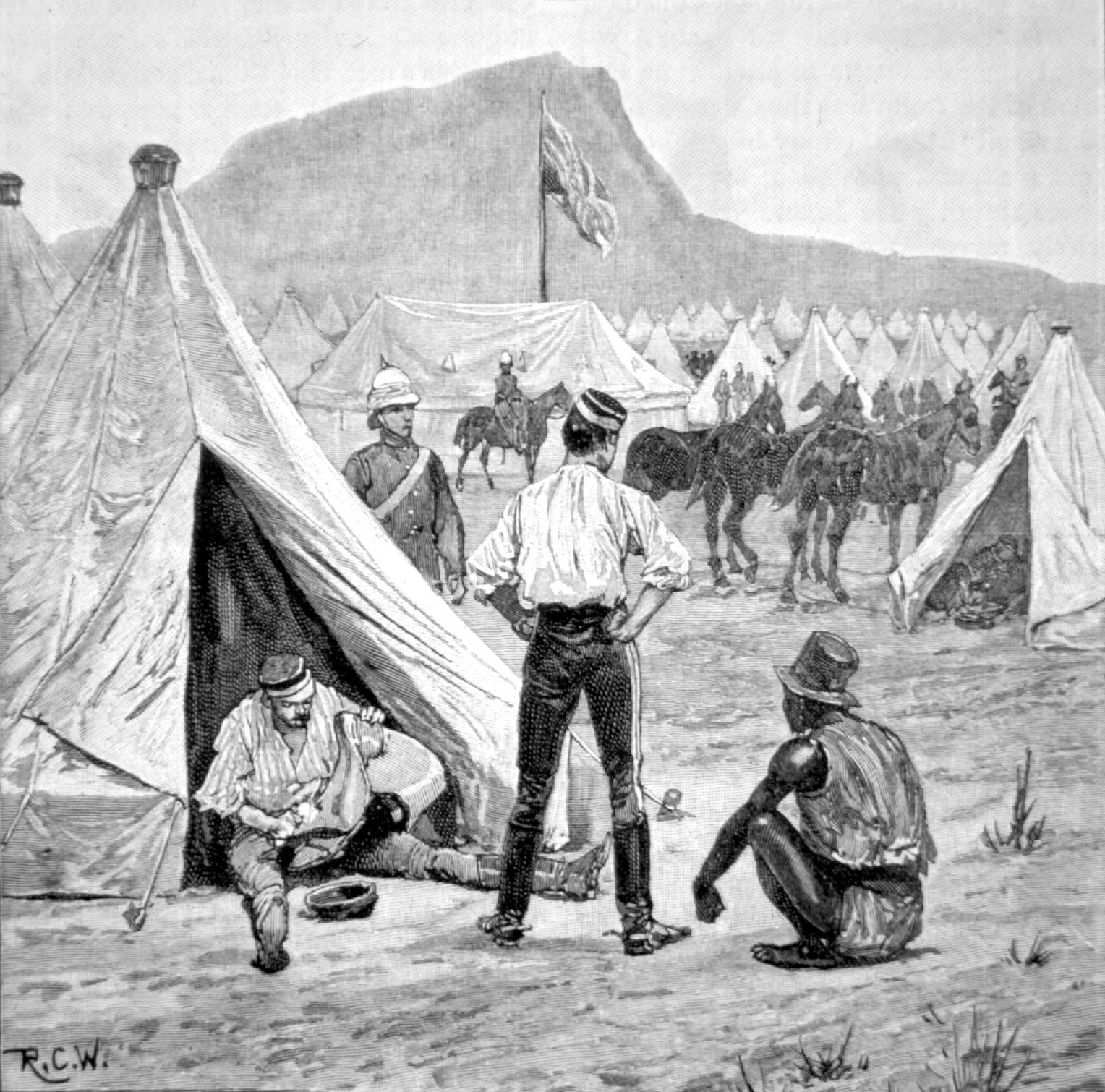
In the 1820s a dynamic king, Shaka kaSenzangakhona, put the Zulus on the road to greatness and power. Shaka had real military genius, and introduced such innovations as the short stabbing spear that revolutionized native warfare. The Zulu were not professional soldiers, but they became very adept at war. Zulu territory expanded, as did Zulu military prowess, and by 1877 the tribe could muster an impi of around 40,000 or so all told.
The Zulu Army Strikes Fear into the British
As High Commissioner for South Africa, Sir Henry decided to roll up his sleeves and bring order to the chaos by imposing confederation. In essence, confederation would unite all parties and factions and make them subject to the British crown. Of course, there would be elements within South Africa that would resist such a move, but Frere was certain he could accomplish the task at hand.
He began to cast eyes across the Mzinyathi (“Waters of the Buffalo”), the river that marked the boundary between Natal and Zululand. The current Zulu king was Cetshwayo kaMpande, who had been crowned by the British after his father’s death in 1873. Frere became obsessed by Cetshwayo, and his nearly paranoid suspicions deepened as the months wore on. Sir Henry’s greatest fear was a Zulu invasion of Natal, and soon his fevered imagination was conjuring images of Cetshwayo’s “man-killing gladiators” descending on Natal to slaughter, pillage and rape. And behind that imagined threat was the looming specter of a general native uprising against the white population. Suppose the Fingos, Swazis, Mashonas, Griquas and others joined the Zulu in an all-out campaign of white extirpation?
No, in Frere’s view the massive Zulu military threat was a cancer that had to be excised from the South African body politic, and the sooner the better. The Zulu nation had to be brought under British control, and its army destroyed, before the supposed blessings of confederation could take effect.
Sir Henry Bartle Frere decided a Zulu war was an absolute necessity, but his superiors in London were far from convinced. They saw the bigger picture, since Great Britain was at the height of her power and had global responsibilities. A potential war with Russia was looming in Afghanistan and under the circumstances the British government didn’t want to be tied down in a senseless colonial adventure. Frere was told in no uncertain terms to treat the Zulu with a “spirit of forbearance.” But Frere was not about to let official disapproval stand in his way; his plans were too far advanced for that.
Inventing Reasons for War
There had to be a pretext for starting a war, a cloak to cover naked British aggression. Sihayo kaXongo, a Zulu border chief, had the misfortune of having adulterous wives, and his domestic difficulties provided Frere with an excuse for war. Two of the wives fled with their lovers into Natal, but the British colony did not prove a refuge. Mehokazulu, one of Sihayo’s sons, took a party that crossed the border, tracked the fugitives down, and dragged them back for execution. It was said the adulterous wives were clubbed to death.
The incident gave Frere two “reasons” for war. First, Mehokazulu had been guilty of violating the border, “invading” Natal with a force of indeterminate size. The wives had been killed without trial or due process, another “violation” of British—though not Zulu—moral principles. Over the years European missionaries in Zululand had complained of Cetshwayo’s rule, generally denouncing him as a bloodthirsty tyrant who arbitrarily killed his victimized subjects. These tales, of course, played into Frere’s hands.
By the fall of 1878 Frere’s statements were becoming more shrill and outrageous. He spoke darkly of Cetshwayo’s “faithless and cruel character” and “atrocious barbarity,” even though he had never met the king and most of the stories were hearsay. In truth Cetshwayo wanted peace with the British. He knew that Queen Victoria’s empire, the realm of the “Great White Queen,” stretched around the globe. Much of the misunderstanding stemmed from cultural, not political, differences. The king did execute people on occasion, but such “barbarities” were well within the norms of Zulu society.
Impossible Demands Force the Zulu’s Hand
The Boer Transvaal Republic became bankrupt, so insolvent it was annexed by Britain in 1877. In taking over the Transvaal, Britain also inherited a long-standing, festering border dispute between the Boers and the Zulu. Both sides had claimed a slice of land along the Blod River, so a boundary commission was formed to arbitrate the dispute. The commission ruled in favor of the Zulu, but Frere refused to let the tribe occupy the lands before some of his demands were granted first.
In December 1878, the Zulu were presented with what amounted to an ultimatum. The British demanded that Cetshwayo disband his army, permit a British resident to live in Ulundi, surrender Sihayo’s son to British justice and pay a cattle fine of five hundred head. Above all, the demand that Cetshwayo disband his army struck at the very heart of Zulu society. Most of these demands—with the possible exception of the cattle fine—were impossible, as Frere well knew. The ultimatum was a legal façade to mask Frere’s aggression, but the High Commissioner felt the die was cast.
Because war was now a certainty, Sir Henry turned matters over to the commander-in-chief of British forces in South Africa, Lt. Gen. Frederic Thesiger, 2nd Baron Chelmsford. The subsequent disaster at Isandlwana had put his reputation under a cloud, but he was far from the stereotypical “dunderhead” that seemed to officer the British army in the 19th century. His plans were sound, his preparations thorough, but he couldn’t seem to shake the feelings of superiority that many Victorians felt when dealing with native peoples.
Chelmsford had fought in South Africa before, and had been instrumental in bringing the Ninth Cape Frontier war to a successful conclusion. There were lessons to be learned from this campaign against the amXhosa, but unfortunately Chelmsford probably drew the wrong conclusions.
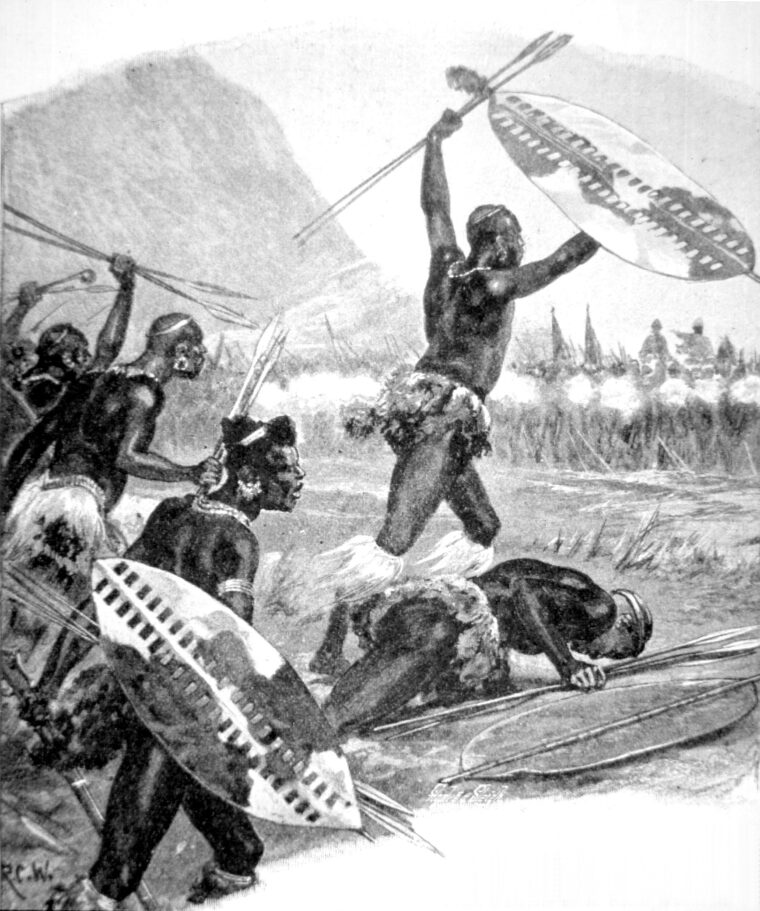
“Drive the Zulus Into a Corner and Make Them Fight.”
The amXhosa had resorted to hit-and-run guerrilla tactics, and when they did attack in force, withering British rifle volleys swept them away. Chelmsford probably felt the Zulu campaign would be a near carbon copy of the Ninth Cape Frontier war. He had no intention of wasting his time fruitlessly scouring the hills and valleys in search of an elusive foe. On the contrary, he was determined to “drive the Zulus into a corner and make them fight.”
Early on it was decided the main British objective would be oNdini, which the whites called Ulundi. It was Cetshwayo’s principal homestead, which made it a prime target. The logistical problems of supply and transport were formidable, almost overwhelming. Ulundi was about 70 miles from the border, over primitive tracks that could well be inundated by rain. More than 12 tons of ammunition would have to be carried, as well as 60 tons of tentage, and also one ton of food a day per battalion. Three of the British columns alone needed 5,391 oxen and other draught animals, as well as 756 carts and wagons.
Chelmsford divided his forces into five columns, three offensive and two defensive. The three offensive columns would converge on Ulundi; the two defensive columns would guard against the possibility of a Zulu incursion into Natal and Transvaal while Chelmsford was away.
The right flank column (No. 1), under the command of Col. C.K. Pearson, was to cross into Zulu territory at a place called the Lower Drift (crossing) on the Thukela River. The Center, or No. 3 column, under what turned out to be the nominal command of Col. R. Glyn, 24th Regiment, was to cross the Mzinyathi (Buffalo) River at Rorke’s Drift. The final offensive column, the left flank column (No. 4) was led by Col. H.E. Wood of the 90th Light Infantry. No. 4 was to invade Zululand from the Ncome River.
Colonel Anthony Durnford took charge of No. 2 column with orders to stay on the defensive near the Middle Drift of the Thukela River. In similar fashion Colonel Rowlands was based at Luneberg in the Transvaal with No. 5 column. Rowlands had a kind of dual mission. He had to protect the Transvaal from Zulu attack, but he also had to “watch his back” and monitor the Republican Boers who were still unhappy over British rule.
One man in four was given an obsolete rifle and was issued only four rounds of ammunition
On January 11, 1879 the British ultimatum expired and the war officially started. The No. 3, or center column, was a strong one, composed of some 4,700 men, of whom 1,852 were Europeans. Altogether it was a mixed group of British regulars, colonial volunteers and native levies.
Since the British government did not have the funds or the desire to fully garrison colonial outposts, units like the Natal Volunteer Corps filled the void. These were generally white settlers who were good shots, could ride well and in some cases could speak native tongues. Their discipline varied, but their sartorial splendor made up for any lack of formal training. Officers of the Alexandra Mounted Rifles, for example, sported a gray “frogged” tunic in a kind of hussar style. And their names were as exotic as their dress; No. 3 column had the Natal Mounted Police, Natal Carbineers, Buffalo Border Guard and the Newcastle Mounted Rifles.
Chelmsford also raised native levies, an intelligent move that was squandered by mishandling and white apprehension. Because blacks far outnumbered whites, many colonials feared arming blacks. After all, European technology—firearms—was the one edge that whites had over native Africans. There was always the possibility that the blacks, once armed and trained, would use their weapons on the whites.
In spite of these concerns, Chelmsford raised several regiments of the Natal Native Contingent, or NNC. Only one man in four was given a rifle, usually an obsolete model, and was issued only four rounds of ammunition. Most of the NNC were armed with traditional spears and clubs, augmented by a cowhide shield. Their officers and NCOs were white, the latter often from the dregs of society. Commandant George Hamilton-Browne’s 1st Battalion, 3rd Regiment of the NNC, can provide an example of such a unit. Hamilton-Browne’s memoirs are filled with contemptuous references to the natives under him, and at one point he even labels them “these cowards.” Yet how could their morale not be low? Denied their own leaders, ill-trained, buffeted and scorned, used as cannon fodder by contemptuous whites, the NNC could never live up to its potential.
The backbone of No. 3 column was composed of the two battalions of the 24th Regiment (2nd Warwickshires, later South Wales Borderers). They were regulars, highly trained and disciplined, and armed with the Model 1871 Martini-Henry rifle. The Martini-Henry (MH in some accounts) was a single-shot breechloader that fired a heavy .450 bullet. Artillery support for the column was provided by N Battery, 5th Brigade Royal Artillery, Maj. Stuart Smith commanding. The N/5th was equipped with six 7-pounder guns.
By Orders of the Great White Queen
No. 3 column began crossing the Mzinyathi or Buffalo River in the early morning hours of January 11. A heavy fog blanketed the area, thick cottony tendrils that hung close to the ground and caused the troops to shiver. Hamilton-Browne conceded that while the white troops were cold, the nearly naked natives were “blue” and had “chattering teeth.” Natal Volunteer Cavalry were the first to cross, plunging into the cold waters supported by Royal Artillery guns on the Natal side.
The first objective was the homestead of Chief Sihayo kaXongo in the Banshee River valley. It will be recalled that Sihayo’s sons had violated the Natal-Zululand border in search of his adulterous wives, an incident that provided a pretext for the war. Chelmsford could have bypassed the stronghold, but he didn’t want to have a potentially dangerous enemy at his rear, threatening his communications. The Sihayo stronghold was assigned to four companies of the 2nd Battalion, 24th Regiment and the 1st Battalion, 3rd Regiment of the NNC, Hamilton-Browne’s outfit.
Sihayo’s homestead was set in a gorge, precipitous hills rising all around. Strict orders were given that special care was to be taken to spare women and children. Although the British did not know it, Sihayo and most of his men were with the king, and so the homestead was not, in fact, heavily guarded.
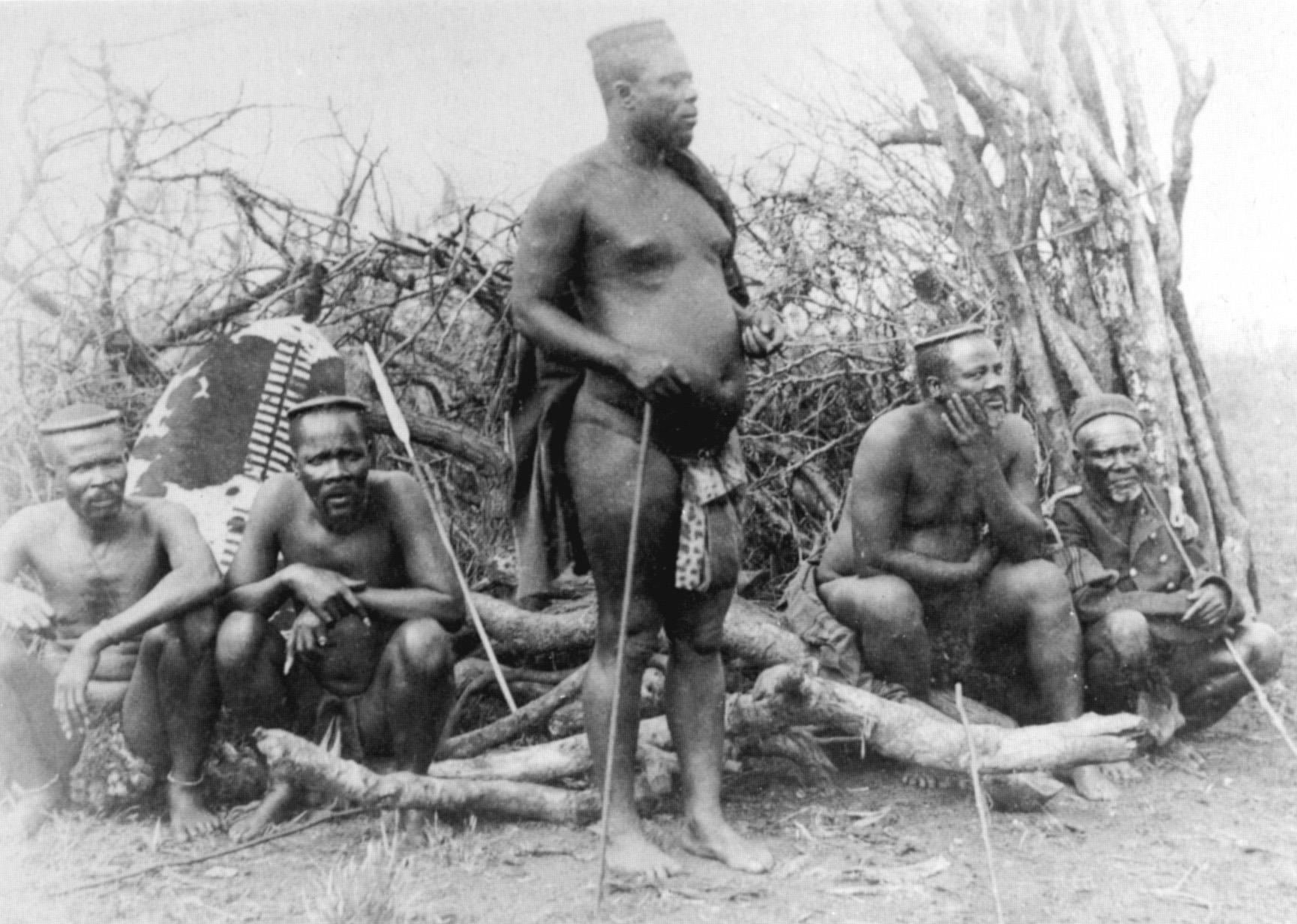
In any event, as the British forces converged on the homestead, a Zulu voice boomed out a challenge, demanding to know by whose orders they came. An officer on Hamilton-Browne’s staff, Captain Duncombe, replied, “By orders of the Great White Queen.” The exchange was the nearest the Zulu would ever get to a formal declaration of war.
The Zulu Army Battles Their Former Comrades
Shots rang out from the Zulu positions, but the ragged volley was ineffective because the Zulu had little real experience with firearms. Hamilton-Browne led his NNC men forward, but the going was rough owing to boulders strewn over the ground. The commandant himself was in the forefront, his No. 8 company following close behind. No. 8 was Hamilton-Browne’s pride and joy; he considered them his best men, and with good reason. The whole company was composed of disaffected Zulu, and their change of allegiance did nothing to lessen their fighting abilities.
The attack seemed to be going well, when Hamilton-Browne looked around and found to his surprise that almost his entire command—with the exception of No. 8 company—had taken to their heels. The stampede was checked by the redcoats of 2nd/24th, advancing with bayonets fixed. Caught between two fires, the NNC chose the “lesser of two evils” and renewed their advance on Sihayo’s stronghold. “Encouraged” by the pickly line of bayonets to their rear, the NNC timidly advanced. There was some heavy skirmishing, and even an episode of hand-to-hand fighting as the Zulu of No. 8 company tested their mettle against their former comrades.
Sihayo’s homestead was finally taken by about 9 am on January 11. Approximately 20 Zulu were killed in the fighting, and the remainder surrendered on promise of good treatment. About five hundred head of cattle were taken, and the homestead put to the torch. It was said that two of the chief’s sons had been killed in the skirmish, and some of his daughters were prisoners. Lord Chelmsford later visited Hamilton-Browne’s camp and thanked him for a job well done. The commander-in-chief was pleased, writing in a letter that “I am in great hopes that the news of the storming of Sihayo’s stronghold and the capture of so many of his cattle may have a salutary effect in Zululand and either bring down a large force to attack us or else produce a revolution in the country.”
Sow the Wind, Reap the Whirlwind…
In the missive, Chelmsford shows he was substituting wishful thinking for hard-nosed reality. He even released two wounded Zulu to spread the news about “how the British make war.” Chelmsford still clung to the belief that the Zulu would “fade away” and conduct a hit-and-run guerrilla campaign; thus his obsession in bringing them to battle. And the notion that some “revolution” might topple Cetshwayo from his throne was also to prove illusory.
Yet the small-scale Sihayo skirmish was to loom large in light of subsequent events. Far from cowing the Zulu, the Sihayo skirmish galvanized them into action. The British had unknowingly sown the wind; now they were going to reap the whirlwind.
Back at Ulundi, King Cetshwayo had been both baffled and alarmed by the British ultimatum. Fulfilling the terms was clearly impossible, and the Zulu king could not understand why the British were pushing him into a corner. Not knowing what to do or who to turn to, Cetshwayo was paralyzed with indecision. He didn’t want war with the abeLungu , the white men, yet war was being forced upon him. The king and his councilors were finally stung to action by news of the Sihayo homestead skirmish.
The British had shown their hand, so Cetshwayo’s path was clear. The king issued orders for his regiments (ambutho , singular ibutho ) to be called up and readied for war. Cetshwayo decided on a purely defensive stance, since the king hoped for an accommodation even at this late date. His impis would drive the invaders from Zululand, but under no circumstances would they cross into Natal. A defensive campaign would show the world that the British, not the Zulu, were the true aggressors. Because of the Sihayo homestead skirmish the central or No. 3 column was rightly considered the greatest threat. Cetshwayo’s main impi, variously estimated at between 20,000 and 25,000 strong, would concentrate its efforts on the central column.
Crouching Beast, Clenched Fist
In the meantime the British were establishing a camp at Isandlwana. Isandlwana is an irregular sandstone outcropping that looms above a plain that spreads along its eastern flank. Isandlwana Mount is about three hundred yards long, its southern end thrusting into the sky. To the Zulu it looked like a clenched fist, but to members of the 24th Regiment it looked like a crouching beast, and bore an uncanny resemblance to the sphinx badge they sported on their collars.
Isandlwana Mount was connected to a stony kopje (hill) by means of a nek or col. A rough track—the road to Ulundi—passed over this backbone of land at right angles. To the north and northwest a range of hills formed an escarpment of the Nquthu Plateau. As indicated earlier, a plain rolled out to the east of Isandlwana Mount, rocky grass-carpeted ground widened to four miles and running for some eight miles. The plain was also scarred by one or two dongas (watercourses), and not far away a conical kopje poked up out of the ground.
Tents were soon erected, white “mushrooms” springing up in neat white rows some eight hundred yards along the foot of Isandlwana. All in all Chelmsford was well pleased with the site; it afforded good views to the east, toward Ulundi, where Cetshwayo’s main impi must be lurking.
“Do the Staff Think We are Going to Meet an Army of Schoolgirls?”
But other officers were troubled, not pleased, by the camp’s location. For one thing, the wagons were all clustered in a park, not arranged in a defensive laager . Based on an old Boer method of defense, a laager was a circle of wagons arranged in a manner reminiscent of American movies of the Old West. Chelsmford’s own field regulation mandated laagers on campaign, but at Isandlwana the instructions were ignored.
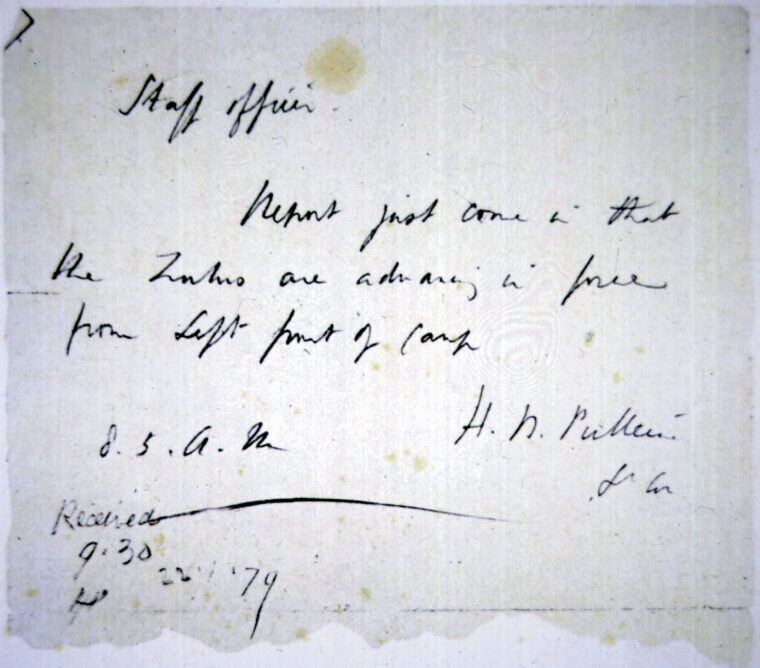
Commandant Hamilton-Browne was surprised at the openness of the camp, declaring that “someone’s mad.” Captain Duncombe added, “Do the staff think we are going to meet an army of schoolgirls? Why in the name of all that is holy do we not laager?” Even Col. Richard Gyn, the nominal head of No. 3 column, felt the camp was “very” extended and vulnerable. He too wanted to laager , but was overruled by Lord Chelmsford.
Some of these objections can be found in memoirs written years after the events they describe, and may in some cases be 20/20 hindsight. But it is probably true that many, including the colonial volunteers, were disturbed by the camp’s lack of defensive arrangements.
The Folly of Overconfidence
Chelmsford did have his excuses. He felt the wagons had to be free to keep a steady stream of supplies coming up from Rorke’s Drift. Wagons in laager would be stationary and therefore useless. Besides, why go to all the trouble when Chelmsford intended to move in a day or two? And behind all these reasons lay a basic assumption that British firepower could smash any native attack. British soldiers in formation, the celebrated “thin red line,” didn’t need wagons to hide behind—massed volleys were their laager .
On January 21 Chelmsford decided on some preliminary reconnaissance to the east. Commandant Lonsdale was sent with 16 companies of the NNC to scout the area southeast of the Inhlazatshe Hills, while Major Dartnell was dispatched with some colonial mounted volunteers to the Nkandia Hills. By the afternoon of the 21st the two units had met not far from the Mangeni River. Spectacular waterfalls lay along the river, but nature appreciation was the last thing the British had on their minds. Dartnell had encountered perhaps 1,500 Zulu. He camped for the night, and requested reinforcements from Chelmsford, but initially the request was denied. When Chelsmford was awakened at about 1:30 in the morning with a second message from Dartnell, he decided to act. Those 1,500 to 2,000 Zulu confronting Dartnell might well be the “tip of the iceberg,” an indication that the main impi was somewhere around the Nkandla Hills.
Dartnell had perhaps 1,400 men, but the bulk of his troops were the ill-trained and thoroughly demoralized NNC. They could hardly be expected to mount an adequate defense, much less an offensive, if the main impi of 20,000 or so showed up. No, Dartnell might not be in immediate danger—but when the coming dawn broke, what might he face in the morning? Chelmsford decided to reinforce Dartnell, because he was probably certain the long-hoped-for battle with the main impi could be found there.
Chelmsford dictated a flurry of orders to his military secretary Col. John Crealock. A message was sent to Col. Anthony Durnford ordering him to take his No. 2 column—up to this point assigned a passive defensive role—and move up to the camp at Isandlwana. Chelmsford was going to split his force, leaving roughly half in camp while he took the rest and marched in support of Dartnell. Splitting a force when lacking adequate intelligence of enemy movements was a violation of sound military principles. But to Chelmsford, sound military principles were only valid against a European foe, not “savages.”
Lieutenant Colonel Henry Pulleine of the 24th Regiment was placed in charge of the camp at Isandlwana, with strict orders to defend the camp if attacked. The Isandlwana camp garrison consisted of five companies of the 1st Battalion, 24th Regiment (1/24th), one company of the 2nd Battalion, 24th Regiment (2/24th), over 100 mounted Infantry and volunteers, and four companies of the NNC. Artillery support was provided by Maj. Stuart Smith RA (Royal Artillery) and two 7-pounder guns of N/5 battery. Once Durnford reinforced Isandlwana there would be 67 officers and 1,707 men to guard the camp, a number that Chelmsford deemed more than adequate for the task at hand—not that he felt the camp would be in any danger. Chelmsford left Isandlwana about 4:30 am on January 22, confident he was going to make contact with the main impi and defeat it.
It Was As If The Very Earth Had Swallowed Them
Pulleine had a screen of cavalry vedettes posted on the Nquthu Plauteau as well as a few on the conical kopje that rose about a mile from camp. To augment this early-warning screen, an infantry picket line was posed in a curve about 1,500 yards from camp. All seemed in order, with every precaution taken.
At 8 am a cavalry vedette rode in with some surprising intelligence: A force of Zulu was spotted approaching the plateau moving northeast. Pulleine ordered a “fall in,” and the brassy notes of British bugles reverberated and rebounded off the ancient crags of Isandlwana Mount. The various red-coated companies formed up in front of the tents, but incoming reports did not seem to indicate an immediate threat to the camp.
The situation was fluid, and somewhat confusing, because the Zulu that had been spotted divided into three groups, two of which suddenly disappeared. It was as if the very earth had swallowed them. Around 10:30 am Col. Anthony Durnford’s supporting No. 2 column reached Isandlwana. He had about five hundred men with him, including a body of cavalry called the Natal Native Horse. The NNH were good fighters, tribesmen who were devoted to Durnford and had an animosity toward the Zulu.
Durnford, who had been in South Africa since 1872, was one of the few whites who
didn’t look at native blacks with contempt. An engineer, Durnford had an independent spirit that sometimes brought him into conflict with Chelmsford, a no-nonsense Victorian officer of the old school. A colorful figure, he had lost the use of his arm in an earlier campaign against the amaHlubi. He sported a hat with a scarlet puggaree, which he humorously said made him look like a “stage brigand.”
Once he reached camp, Durnford had a quick consultation with Pulleine, which some subsequent reports blew up into a heated argument. But apparently the two men got along and parted amicably. Durnford’s position at Isandlwana was ambiguous, since he was technically senior over Pulleine. Because Chelmsford told Durnford to support Isandlwana but not expressly take command, the latter felt he could act independently.
”It was an awesome spectacle, a living black carpet of some 20,000 warriors quietly waiting…”
Judging from the reports filtering in, it was clear that at least some Zulu were in the northeast, and it was possible they were planning to fall on Chelmsford’s rear. Durnford decided to nip such a movement in the bud by making a thorough reconnaissance. Durnford himself led part of his forces along the base of the Nquthu escarpment, while other horsemen were sent to scout the plateau.
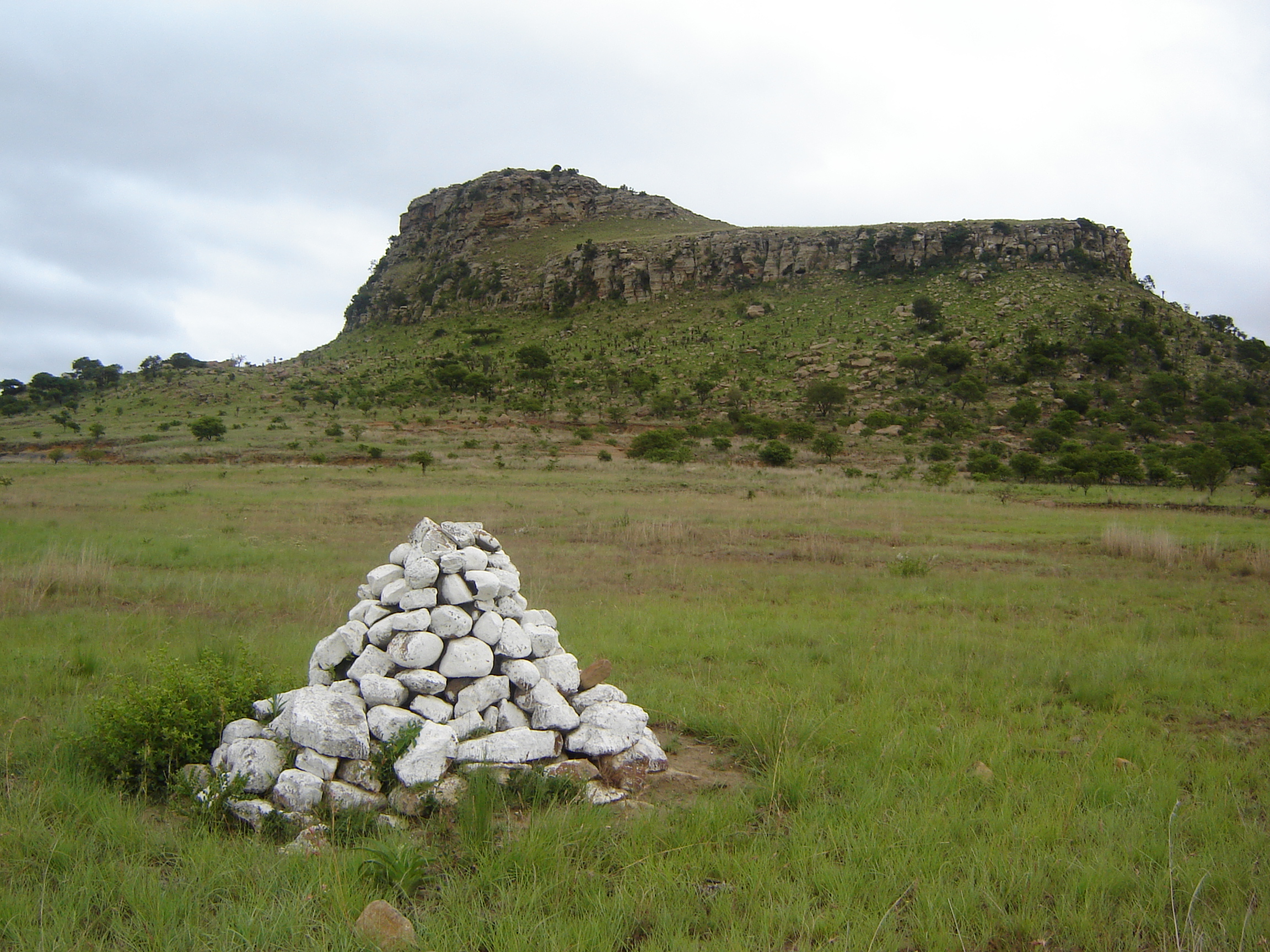
One of these units, a cavalry troop of Natal Native Horse under Lieutenant Raw, spotted a group of Zulu herdsmen driving some cattle and gave chase. The herdsmen ran, disappearing behind a rocky outcropping. Raw’s men followed, then abruptly drew rein when the ground fell away to form the Ngwebeni Valley. The troopers could not believe their eyes, because there, sheltering in the valley spread at their feet, was the main Zulu impi. It was an awesome spectacle, a living black carpet of some 20,000 warriors quietly waiting with scarcely a murmur. They were basically marking time, waiting for an auspicious time to attack. The evening of January 22 would have a new Moon, a time when evil supernatural forces would be abroad.
But all notions of auspicious times were quickly forgotten when the Zulu caught sight of Raw’s patrol gazing down on them from the valley lip. The Zulu regiment closest to the valley rim, the uKhandempemvu (“white headed”—probably a reference to their headdresses), rose as one man and began to climb the slope toward Raw’s tiny patrol. The uKhandempemvu—also known as the umCijo, “sharpened points”—closed rapidly, forcing Raw into a fighting retreat.
Buffalo Army
Other Zulu regiments followed the uKhandempemvu’s lead, a movement that was instinctive and initially beyond the control of their leaders. Without orders the impi formed the impondo zankomo, the beast’s or buffalo’s horns. In such a formation, the “chest” advanced against an enemy, while the right and left horns enveloped them on either side. The loins, stationed behind the chest, became a kind of reserve.
At Isandlwana the induna ekulu (field commander) was Chief Ntshingwayo kaMahole Khoza. He was somewhat obese; he may not have looked like a warrior, but he was a trusted adviser to the king and a man with considerable military experience. The horns and chest of the impondo zankomo had been formed without direction, but Chief Ntshingwayo and other officers successfully formed a “loins” reserve.
The uKhandempemvu and elements of the uMxhapo formed the chest; the uMbonambi, iNgobamakhosi, and uVe the left horn; and the uDududu, iMbube, isAngqu and uNokohenke the right horn. The uNidi Corps formed the loins, namely the uThulwana, iNdluyengwe, iNdlonglo and uDloko regiments.
Pulleine could hardly believe that the main impi was attacking the camp. Earlier the colonel had sent Captain Cavaye’s A Company, 1/24th up to a spur of high ground on the Nquthu Plateau, and then sent Captain Mostyn’s F Company, 1/24th, in support. As more Zulu—ambutho from the chest—appeared, Pulleine recalled Cavaye’s and Mostyn’s companies, which were dangerously exposed. Pulleine also sent his two guns forward to a low rise about six hundred yards in front of the camp.
The Zulu Army Gains Momentum Like a Flood
When Durnford received a message that the main impi was attacking he, too, could scarcely comprehend the news. It seemed too incredible that an entire Zulu army had in effect marched around the British—until he got confirmation in the form of the Zulu left horn as it sped toward him in full attack mode. The Zulu army was an undulating carpet of humanity, a black flood that spilled over the plateau and seemed to gain momentum with each minute. The left horn started to engage Durnford, who conducted a fighting retreat back to camp. The chest came forward, and the right horn ran along the edge of the Nquthu Plateau in a westerly direction, sweeping behind Isandlwana Mount. If the right horn’s envelopment continued, it could cut the road to Rorke’s Drift, and all possible hope of retreat would be gone.
Having retreated almost all the way back to the camp, Durnford reached a deep donga —a watercourse—which was a ready-made trench in which to position his men. Besides his own native horsemen, Durnford had picked up a few odds and ends, including a vedette of Natal Carbineers. Durnford placed his men on the lip of the donga, and soon his entire command was blazing away. The donga was deep, so deep Durnford’s men could even shelter their horses with perfect safety. As his men fired, Durnford walked all along the line, talking, laughing and encouraging their marksmanship with a hearty, “Well done, my boys!”
Just before Durnford reached the donga near the camp, the Zulu had scored their first local success by overrunning a rocket battery that had accompanied him. The unit was commanded by Maj. Francis Russell, and used Hale rockets that carried an explosive charge of between nine and ten pounds. Although they had a range of 1,200 yards, they were clumsy and inaccurate weapons. Considered obsolete for European warfare, rockets were deemed valuable against unsophisticated natives who might be frightened by their noise and flame. The Zulu certainly were not cowed, and Russell and six of his men were speared. Three crewmen survived, though wounded.
Conventional vs. Unconventional Warfare
Major Smith and his artillery tried to keep a hot fire down on the Zulu, but the 7-pounders were less effective than the massed rifle fire. The guns discharged case (a kind of shrapnel), but little execution was done. The Zulu were very observant, even in the heat of battle, and noticed that just before the blue-coated artillerymen fired they stood back from their pieces. Alerted as to when a gun was about to fire, the Zulu would cry “uMoya!” (“air!”) and fling themselves lengthwise on the grassy ground. Their timing was perfect, and the case whistled harmlessly over their heads. One warrior remembered, “The shots didn’t do us much damage. It only killed four men in our regiment.”
The massed rifle fire was a different story. By now a defensive perimeter had been formed in a kind of half-moon in front of the camp. The companies were overextended, and some historians maintain there were gaps as wide as two hundred yards between some of them. In any case the defense was spread thin, too thin, almost like a sheet of tissue paper. One breakthrough, and the whole defense would be torn asunder.
The British line was composed of regular redcoat companies interspersed with colonial and native units. From left to right there was Captain Younghusband’s C Company, 1/24th; some native units; then Captain Mostyn’s F Company, 1/24th; Captain Cavaye’s A Company, 1/24th; and Lieutenant Porteous’s E Company, 1/24th. The redcoat line was broken by the artillery, then there was Captain Wardell’s H Company, 1/24th, and Lieutenant Pope’s G company from the 2/24th. There may have been some NNC on the far right, and then there was the donga where Durnford was putting up a good resistance.
British volley fire was deadly; few if any warriors had ever experienced anything like it. Martini-Henry rifles flamed, and with each crashing volley scores of Zulu fell dead and wounded. British .450-caliber bullets scythed down warriors with grim impartiality, leaving survivors hugging the ground with mounting frustration. NCOs barked the command “Load-Present-Fire” with clockwork regularity, Martini-Henrys spitting death with every disciplined volley. There were veterans in the red-coated ranks, grizzled soldiers who laughed and chatted with each other between volleys. Their faces were bearded, their red coats matted with dust and stained with sweat, but they were soldiers of the Queen, not parade-ground mannequins, and they took pride in their profession.
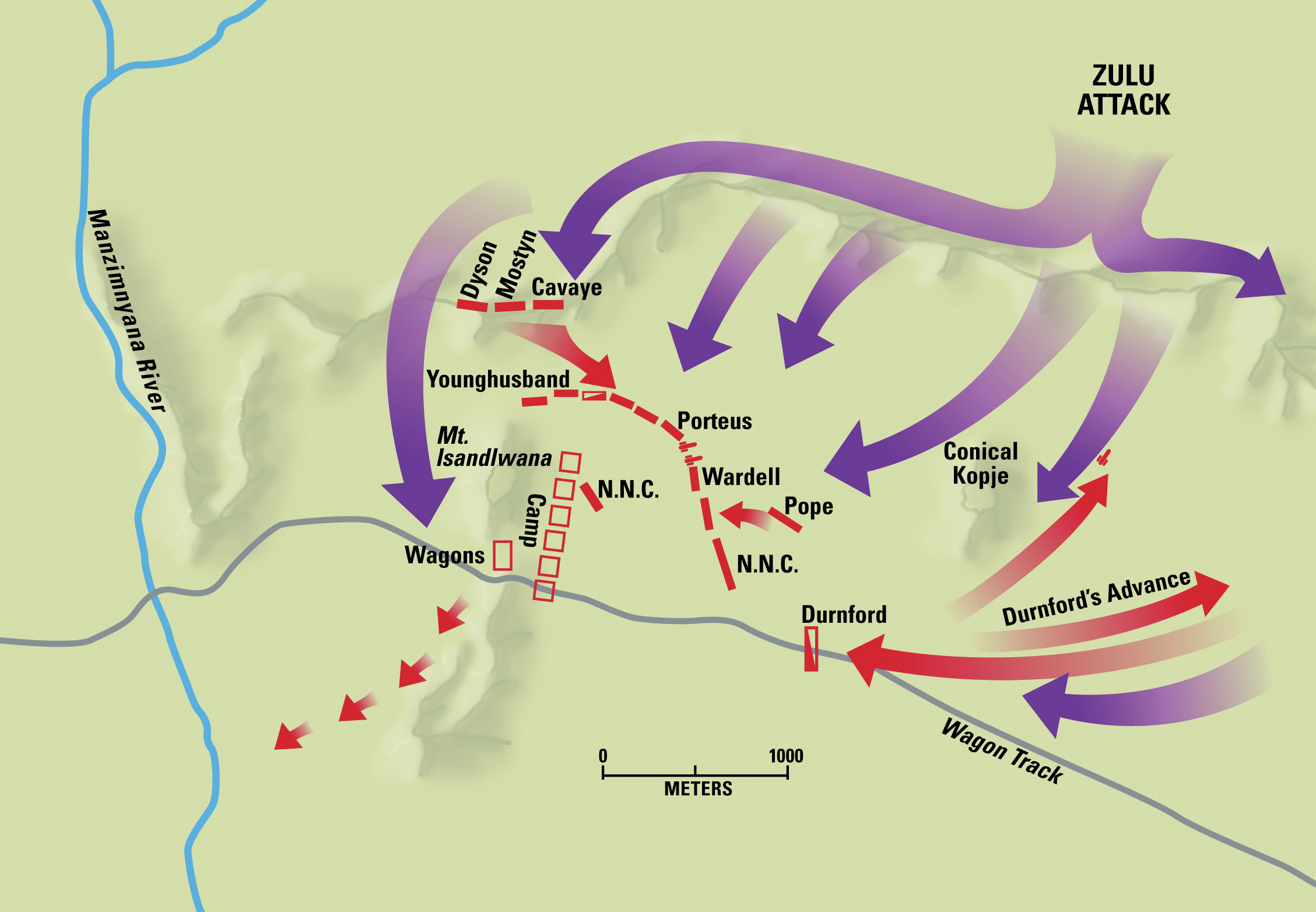
The Crisis Reaches its Peak!
But the redcoat companies were starting to run out of ammunition; they had begun the action with 70 rounds each, but the firing was so rapid that their white ammunition pouches were almost empty. The overextended defense line was also a factor; the reserve ammunition wagons, for the 2/24th, for example, was in the center of camp about a thousand yards from Lieutenant Pope’s Company G position.
And just when the ammunition crisis was at its peak, narrow-minded obsession with regulations made matters that much worse. Quartermaster Bloomfield was in charge of the reserve ammunition for the 2/24th, represented in camp by only Company G. When bandsmen from 1st Battalion companies tried to get fresh supplies from Bloomfield, he sent them away empty handed. He insisted his ammunition was for the 2nd Battalion only, so he sent runners a further five hundred yards to the 1st Battalion reserves being distributed by Quartermaster Pullen. Lieutenant Smith-Dorrien gathered up the flotsam and jetsam of the camp—stragglers, officer’s servants and the like—and organized them into a party to retrieve ammunition. Seeing Smith-Dorrien breaking some ammunition boxes open, Bloomfield cried, “For heaven’s sake, man, don’t take that—it belongs to our Battalion.” Smith-Dorrien, frustrated, replied, “Hang it all, you don’t want a requisition, do you?”
Later, much of the disaster was blamed on the alleged fact that the ammunition boxes could not be opened fast enough, since their lids were tightly fastened by six to nine screws, and also some of the screws had rusted into the wood. There was supposedly a lack of screwdrivers in camp as well. The allegation is fantasy; the lids of the Mark V and Mark VI ammunition boxes were secured by a single brass screw. It was bad luck, poor intelligence and faulty dispositions, not lack of screwdrivers, that caused the disaster.
“Usuthu!” The Zulu Renew Their Assault
The British volleys were still doing terrible execution, and to hearten their comrades some Zulu shouted “Nqaka amatshe!” (Catch the hailstones!)—in other words, treat the hail of bullets with the contempt it deserves. Nevertheless the uKhandempemvu and uMxhapo regiments, among others, were being decimated. Many warriors lay flat on their stomachs to avoid the leaden storm, occasionally crawling forward as circumstances permitted. A Zulu officer by the name of Mkhosana kaMvundlana came on the scene and was disgusted by the sight of so many warriors taking cover. Standing upright amid the rain of bullets, he shouted “The Little Branches of Leaves That Extinguished the Great Fire (an honorific title of Cetshwayo’s) did not order you to do this!”
Shamed, the uKhandempemvu and umMxhapo rose and renewed the assault. Mkhosana was killed instantly when a Martini-Henry slug tore a bloody hole through his skull, but his words had taken effect. It was the decisive moment of the battle, because just at this time Durnford’s men ran out of ammunition and were forced to abandon the donga . NNC units on the right also began to fall back, and soon the entire defensive line was in shambles. It was said that the Zulu regiments, scenting victory, began stamping the ground and shouting “Usuthu!” (Cetshwayo’s royalist cry) before moving forward at a run.
British bugles sounded the “Retire,” the shrill notes heard clearly above the rising cacophony of battle. Pulleine had apparently decided on a fall back to consolidate a new and shorter defensive line. It was a decision that for the redcoats was too little and too late. A wagoner named Dubois remarked to Smith-Dorrien, “The game is up. If I had a good horse I would ride straight to Maritzberg.”
The game was indeed up, and the various companies succumbed one by one, red islands swallowed up in a black tidal wave. A and F Companies of the 24th were taken from in front and behind and slaughtered before they could even fix their bayonets. Bloodied spears took on fresh coats of gore as the redcoats were stabbed again and again. Soon, E and H Companies were also wiped out, and the guns overrun in the human wave.
The Zulu burst into the camp like avenging furies shouting “Gwas abeLungu ! Gwas Inglubi!” (Stab the white men! Stab the pigs!). Since the defense had lost all cohesion, it was simply a matter of groups of men or even individuals selling their lives as dearly as possible. A British sailor from the HMS Active , servant of Naval Attaché Lieutenant Milne, defended himself with a cutlass while standing with his back to a wagon wheel. All avoided the sailor’s sharp blade until a warrior crawled under the wagon and stabbed him from behind. Color Sergeant Wolf of the 1/24th, hastily gathered some 20 soldiers near the officers’ tents and put up a desperate fight until overwhelmed by sheer numbers of Zulu fighters.
Out of Ammo: Bayonet Against Spear
Durnford dismissed his Natal Native Horse and gave them permission to save themselves. Any member of the Isandlwana garrison, white or black, who had an opportunity to at least try to escape, did so. All had done their duty to the last; now that hope was gone, it was not dishonorable to escape to fight another day. For his part, Durnford chose to remain with a handful of men, including a few members of his NNH that chose to stay with him. He organized a last stand on the nek, successfully blocking the Zulu left horn from completing the envelopment of the camp. His sacrifice opened a small corridor of escape to the Buffalo River at a crossing later known as Fugitive’s Drift. That any escaped at all was due to the courageous stand of Durnford and his collection of NNH, colonial volunteers and a few men from the 24th.
Some distance away Captain Younghusband’s C Company was in the midst of his own last stand. Their ammunition was virtually exhausted, but they had had time to fix bayonets. Younghusband then led them up the slopes of Isandlwana itself, instinctively taking the high ground. When the last round was fired the Zulu closed, and it was bayonet and clubbed rifle against stabbing spear. The last few men of Company C gathered together, then rushed forward in a final bayonet charge, the slanting slopes giving their run added momentum. Lunging, parrying and thrusting, they disappeared into the masses of Zulu warriors. About a hundred yards away, Lieutenant Pope’s company suffered a similar fate.
A Shameful Defeat for the British
The main battle was over by about 1:30 in the afternoon, and the various last stands by 3:30. A solitary redcoat held out in a cave high up in the crags of Isandlwana, but he was finally shot, and then all was silence. Smith-Dorrien survived after many narrow escapes, lived, in fact, to lead British troops as a general in World War I. He always felt he owed his life to wearing a blue patrol jacket, not the red tunic. It seems—or so the story goes—Cetshwayo had told his warriors to concentrate on the “red soldiers,” the others being of little account.
The Battle of Isandlwana, probably the worst defeat the British army ever suffered at the hands of a native foe, was over. On the morning of January 22 the Isandlwana garrison had consisted of 1,700 men; now about 1,300 were dead. Only around 60 whites and 400 blacks lived to tell the tale. The 24th Regiment was decimated losing 21 officers and 581 other ranks. The British would recover from this disaster and eventually triumph over the Zulu, but subsequent victories could never erase the memory of what happened near the wind-swept peaks of Isandlwana.
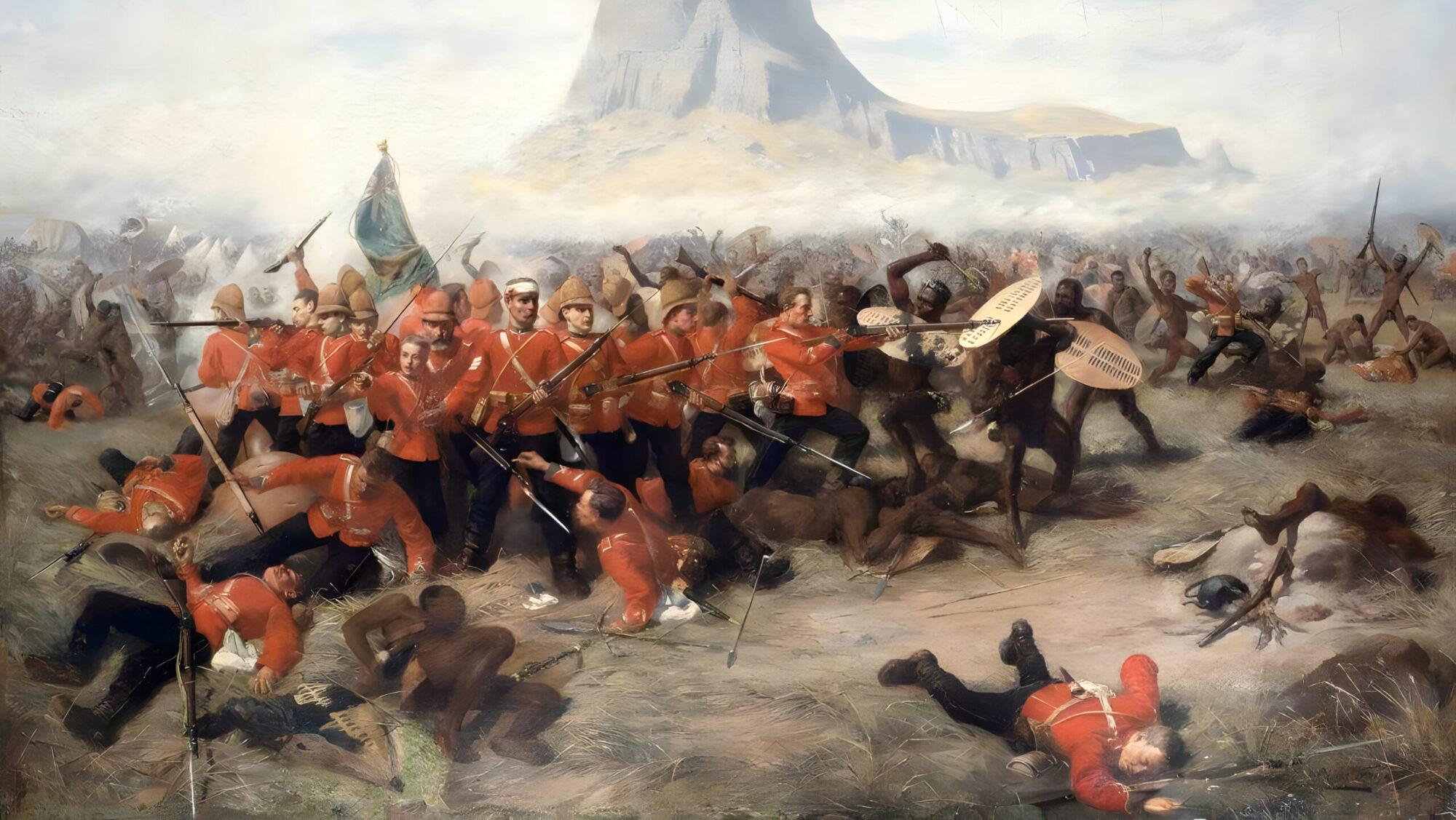
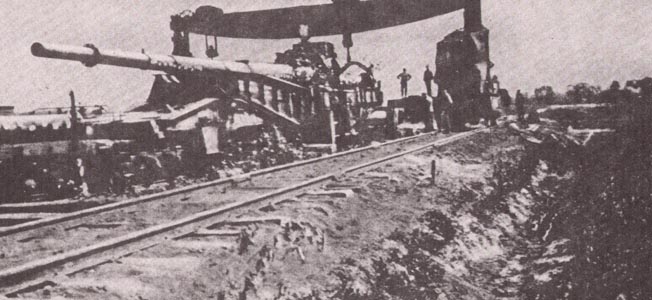
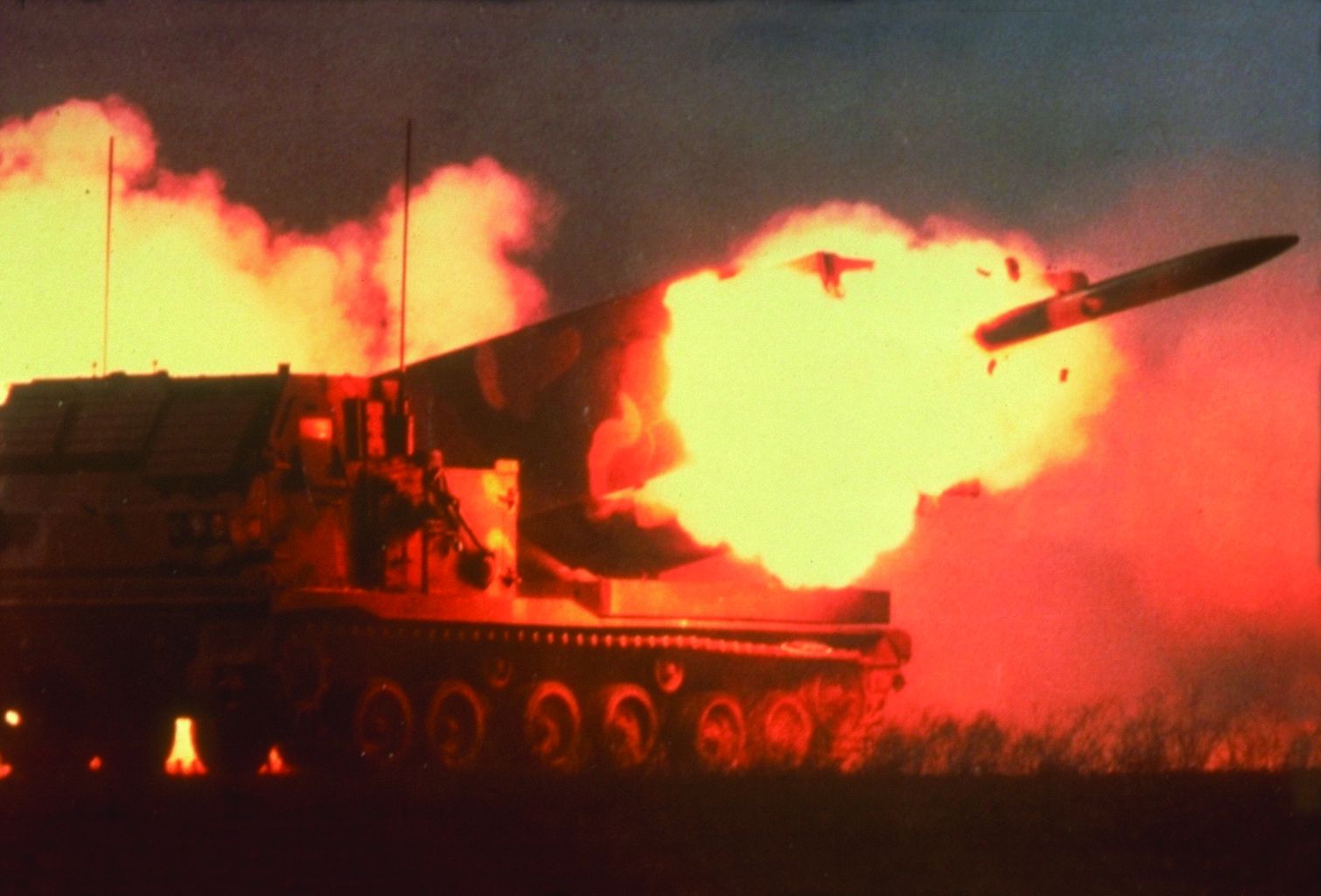
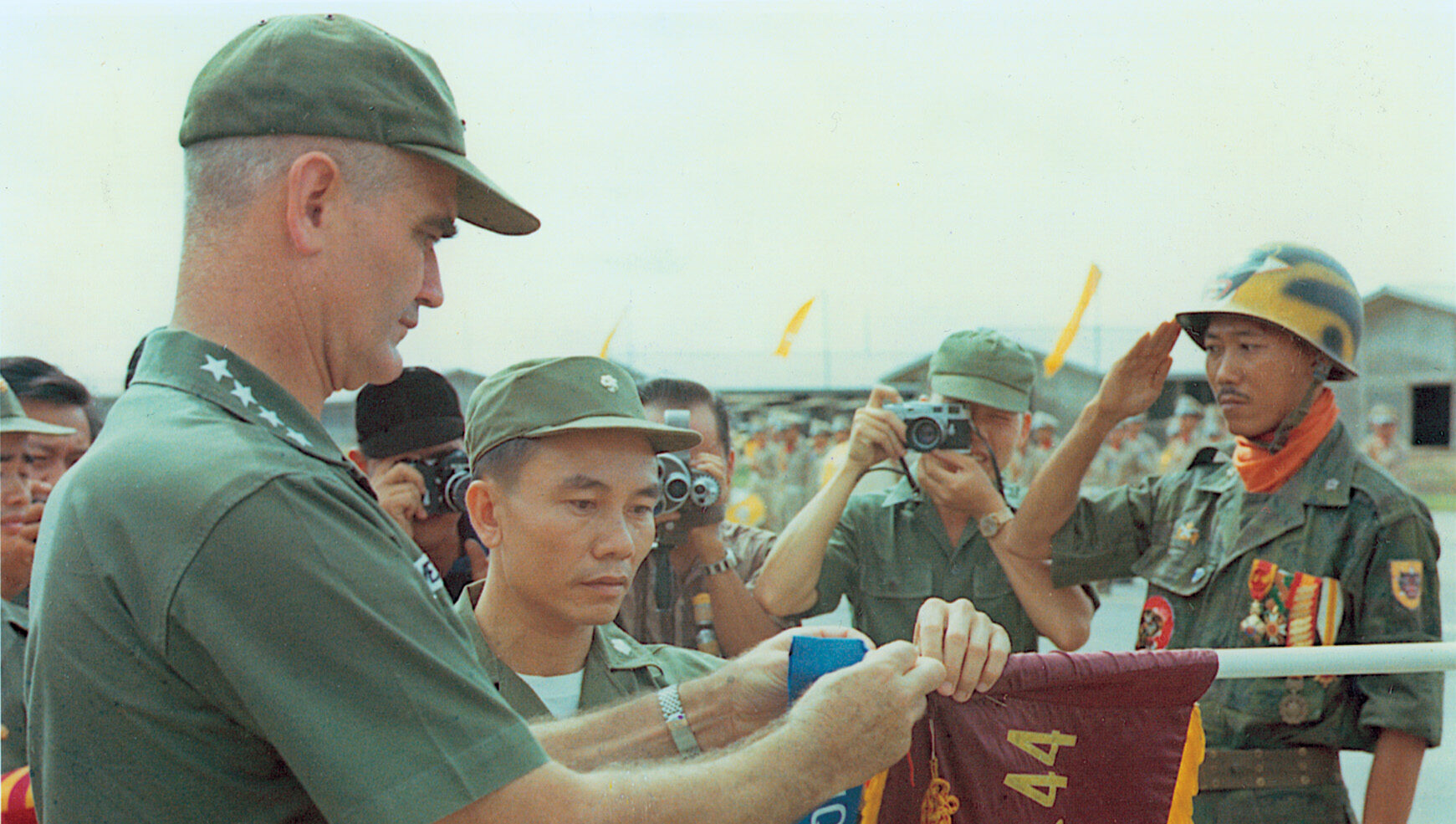
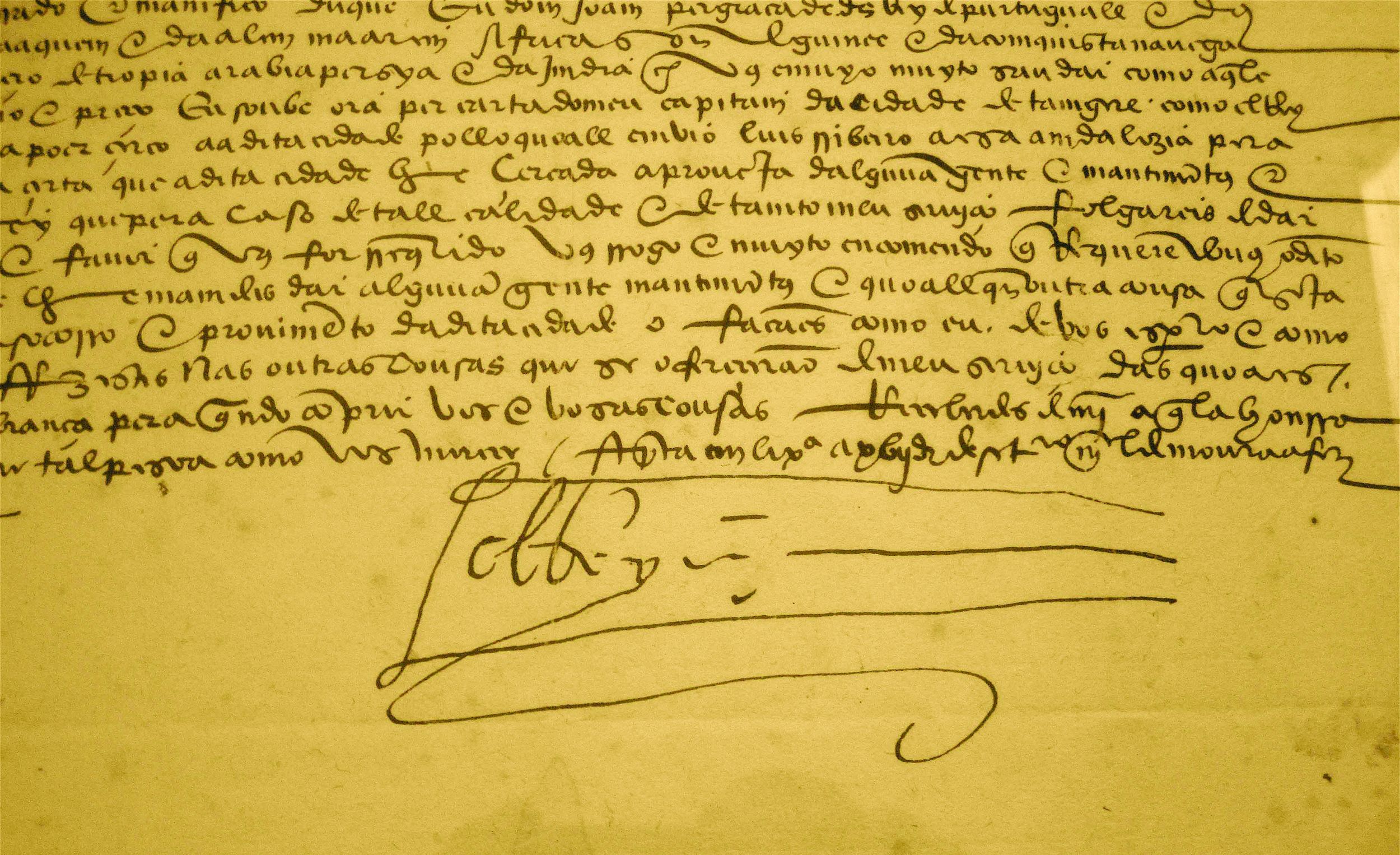
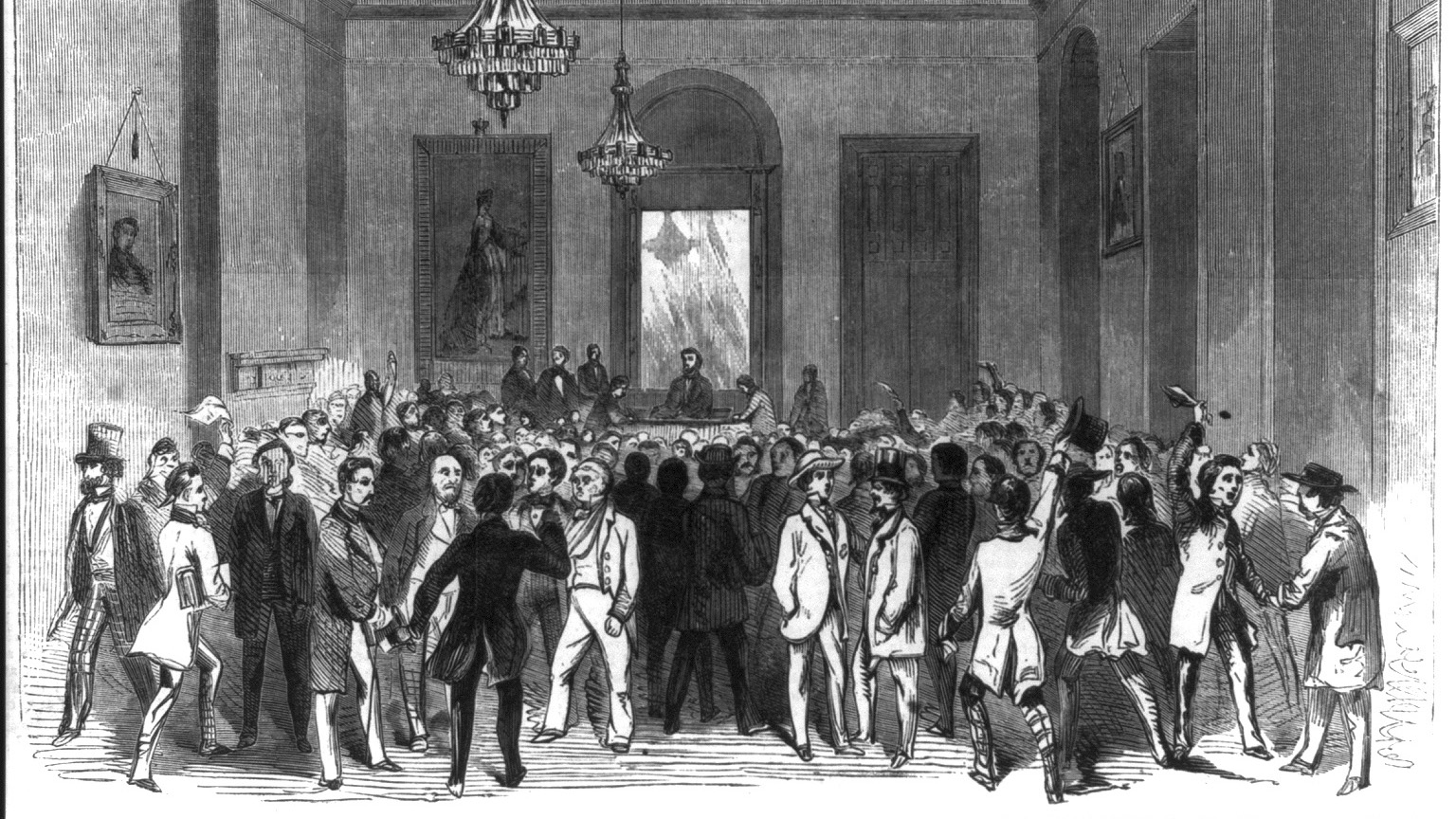
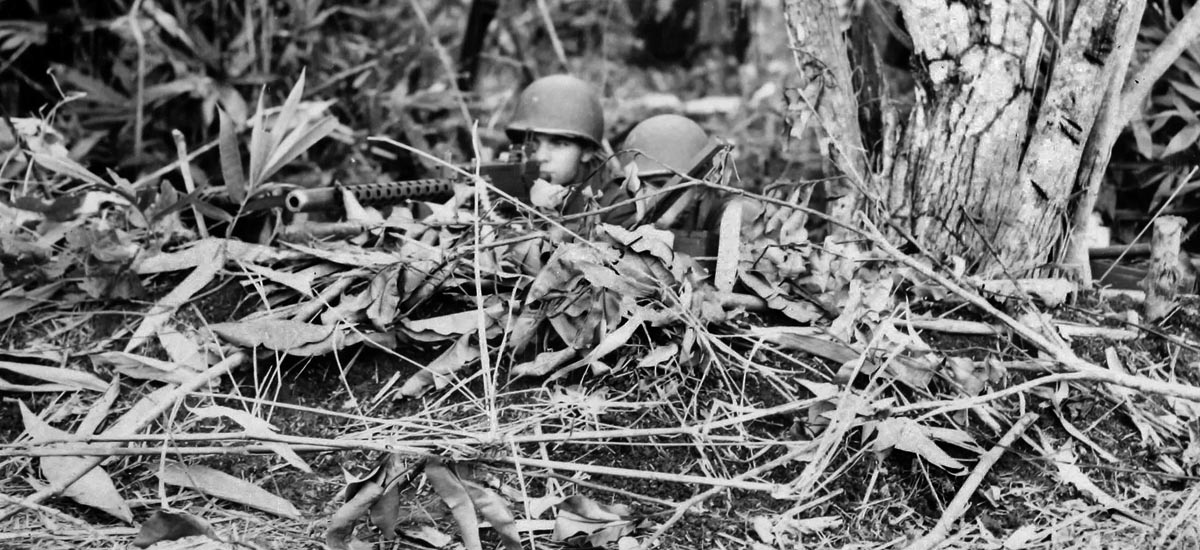
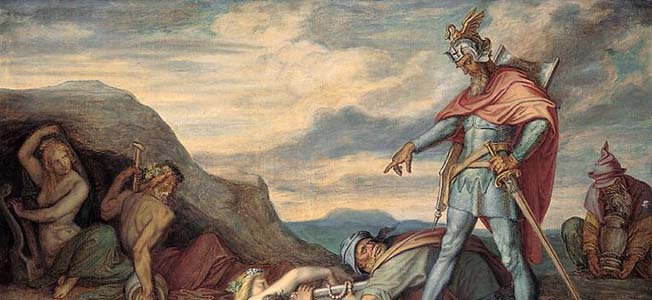
Join The Conversation
Comments
View All Comments